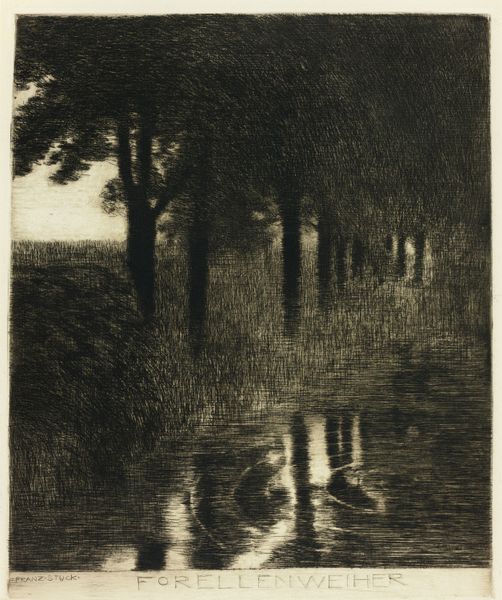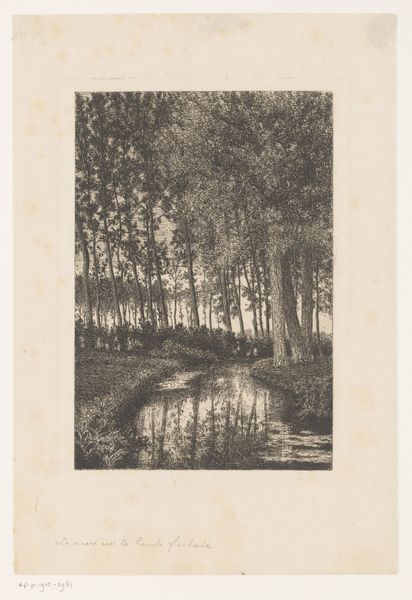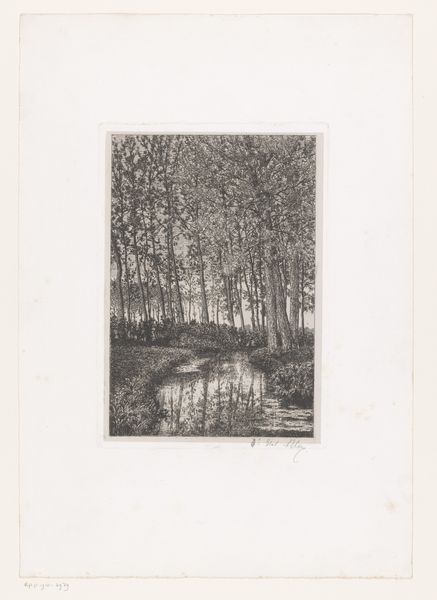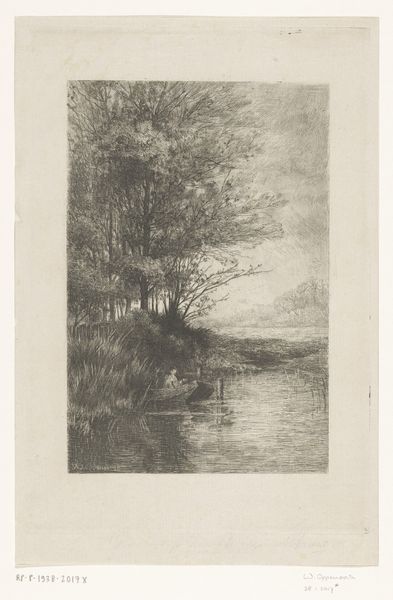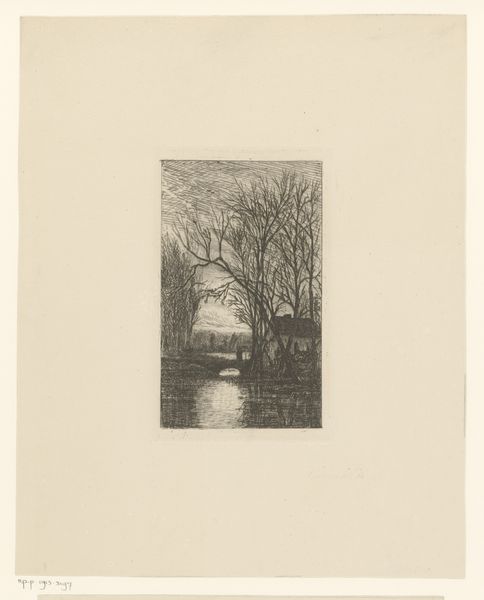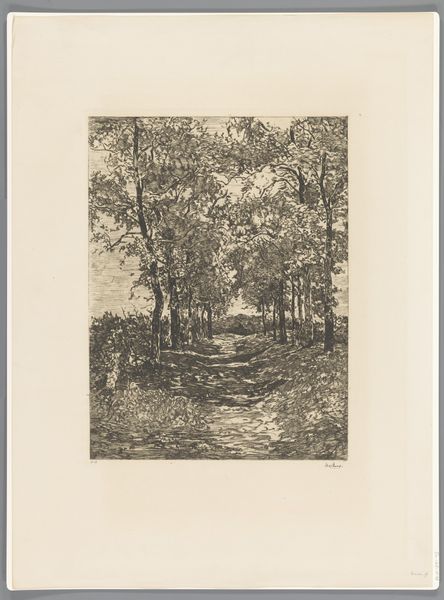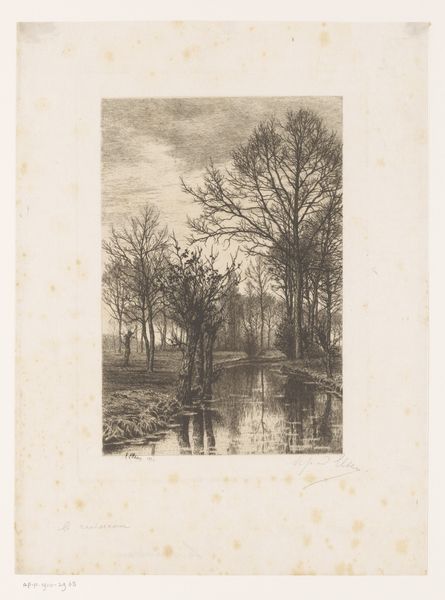
print, etching
# print
#
etching
#
landscape
#
symbolism
#
realism
#
monochrome
Dimensions: 11 × 9 in. (27.94 × 22.86 cm) (plate)16 × 12 1/2 in. (40.64 × 31.75 cm) (sheet)
Copyright: Public Domain
Editor: This is Franz von Stuck's "Forellenwieher (Trout Stream)", an etching from 1890. I'm immediately struck by how moody and still it is. The heavy use of black ink creates a very specific, almost oppressive, atmosphere. What kind of story do you think the image is telling? Curator: Oppressive is a great word for it. Stuck wasn't just creating a pretty picture; he was tapping into something darker. The stark contrast between light and shadow carries a psychological weight, common for artists working within Symbolism. Editor: How so? Is it simply a dark image equals dark feelings equation? Curator: Not that simple. Consider the reflected trees in the water. Reflections have long been used to represent the subconscious, the hidden self. This combined with the forest, a place often used as a symbol of the unknown and untamed. It provokes thoughts about the hidden aspects of nature, both external and internal. And then we consider that Stuck himself experienced great success painting classical and often erotic allegories. Do we then reflect this back into our perception of an otherwise humble waterscape? Editor: Ah, that's a clever comparison, which suddenly adds a feeling of unease, maybe a hidden danger. Curator: Exactly! It moves beyond a simple landscape to become a meditation on our relationship with both. What secrets might be submerged, mirrored, and yet to surface, so to speak? Editor: This really changes how I see it. What started as a dark, though simple, landscape now seems to be hinting at something more complex. Thanks for pointing that out! Curator: My pleasure! It highlights how much images resonate through symbols. They have encoded themselves over centuries to create potent associations in our minds. Always dig deeper and ask how those images are creating memory, creating feeling.
Comments
minneapolisinstituteofart almost 2 years ago
⋮
Munich artist Franz Stuck was one of Germany’s leading artists of the Symbolist and Art Nouveau movements. He rose to such prominence that he was ennobled in 1905 as Franz Ritter von Stuck. Though best known as a painter and sculptor of images based on mythological heroes, he occasionally explored other avenues. In this early work, one of just a handful of etchings that he produced, a calm pool of water reflects nearby trees on its surface. Though completely different from the work that would make him famous, it does reveal the young artist’s sensitivity to nature.
Join the conversation
Join millions of artists and users on Artera today and experience the ultimate creative platform.
